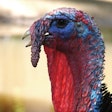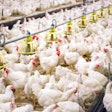By now, most of the general public are familiar with the Avian Influenza virus, or Bird Flu as it is commonly referred. This is due in large part to the national outbreak of the virus this spring in the Pacific Northwest and throughout the Midwest.
Since the first reported case of the virus back in December 2014, more than 49,000,000 chickens and turkeys have died or were euthanized across 15 states in the U.S. And while those numbers sound bad, they don't stop there:
- As many as 233,000 poultry farms were affected across the U.S.
- Since the outbreak, the wholesale prices for table eggs jumped 84 percent
- 75 countries have either a full or partial ban on U.S. poultry exports
- The lost revenue in U.S. poultry exports reached nearly $390 million in the first quarter
The steep decline in exports is one of the largest ever seen as many of the poultry industry's export partners banned the import of U.S. poultry products as a result of the outbreak
"Even one infected chicken house could have a global impact," said Mark Leggett, president of the Mississippi Poultry Association. "One of the worst impacts from the Avian Flu in the U.S. is the impact on global trade. We export a large percentage of poultry products to other countries around the world. Once these countries heard that Avian Influenza had reached America, some stopped importing U.S. chicken. Industry trading partners are reluctant to import any poultry products from the United States."
"Fortunately, the strain of Avian Influenza detected in this country doesn't affect humans, nor is it present on processed poultry products, and to date there have been no commercial broiler flocks affected in the U.S. In fact, all poultry flocks in the United States are tested prior to processing to make sure they are healthy and free of any virus." Leggett continued. "American consumers have a high degree of confidence in the safety of our food supply, and that confidence is well placed."
The Avian Influenza challenge is not over. As fall approaches and brings with it cooler weather, the ideal climate for virus survival, both state and federal agencies, as well as industry representatives and wildlife experts are all working in tandem to mitigate the catastrophic ramifications of another outbreak like the one seen earlier this spring. These measures include ramping up their biosecurity methods at all facilities across the country.
"There is a lot of preparation and coordination happening at every level," said Dr. Phil Stayer, Corporate Veterinarian for Sanderson Farms, the country's third largest poultry producer.
"Within every state that we operate, Texas, Georgia, Mississippi and North Carolina, there are both state and federal plans in place in the event of a reported infection. All state plans must meet the federal minimum standard; however, Sanderson Farms goes well above and beyond the federal minimum standard.
"Once there is a report of the virus, a cascade of events will be set into motion, already scripted out from the state and federal plan, including, quarantines, depopulation and limited movement," Stayer continued.
Also according to Dr. Stayer, since 2014, Sanderson Farms has been sending frequent communications to its employees and growers to remind them of the risk of Avian Influenza and stress the importance of strict adherence to the company's biosecurity measures. Since the outbreak this spring, the company has updated its current biosecurity measures as the industry learned more about the virus.
"Previously we thought the virus was primarily spread by coming up the driveway, transmitted from farm-to-farm by service vehicles and on equipment. Now we realize it’s spread as waterfowl fly overhead, meaning it can easily be picked up by simply walking in your yard through duck droppings," said Stayer. "This means we have had to change our entire mindset from just farm-by-farm, to one that is house-by-house. All of which means much tighter security."
Experts around the country are paying particularly close attention to migrating waterfowl as the fall/winter migration season begins.
"This particular strain of Avian Flu affects all bird species who contract the virus and most birds that get it will get sick and die. However, waterfowl like geese and ducks don't necessarily get sick and can carry the virus for longer periods of time and from place to place as they migrate," said Dr. Kenneth Angel with USDA's veterinary services for Louisiana and Mississippi.
"Other birds can get the virus, but they don't spread the virus long distances because they get too sick to fly, while some are able to spread the virus on their feet or feathers without actually becoming sick.
We know that waterfowl are the main carriers of the virus so that is where we are concentrating our efforts. We also know the virus does not survive well in warm temperatures, which may account for why we didn't see large outbreaks during the spring months in the southern portion of the U.S. However, now that the temperatures are dropping and the birds are beginning to leave their nesting grounds in the North and Midwest, we see the greatest potential for impact in the November/December timeframe."
Houston Havens, Mississippi Department of Wildlife Fisheries and Parks Waterfowl Program Leader, said, "The South is just starting to see some of the early migrants, the Blue Winged Teal, arriving now in fairly decent numbers. However, the peak of migration won't be until mid January."
Havens went on to say, "Migration varies by species and other variables. Cold weather will play a large role in the intensity of migration. Birds can tolerate the cold but long periods of extended cold weather and snow that covers food and other resources will cue up birds to head south to overwinter."


















